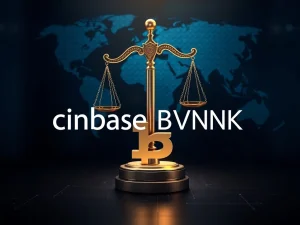Shocking: Global Ledger Reveals $15M Garantex Assets Evaded Tether Freeze

Recent findings by blockchain analytics firm Global Ledger reveal a significant challenge in enforcing financial restrictions within the cryptocurrency space. Despite a targeted action by Tether, approximately $15 million in Garantex assets were detected moving, raising questions about the effectiveness of current crypto sanctions.
Global Ledger Detects Garantex Assets on the Move
Global Ledger, a company known for its sophisticated AML tools, identified active reserves linked to the crypto exchange Garantex. Their report indicates that some of these assets, totaling over $15 million, were transferred even after specific wallets were reportedly frozen.
According to Global Ledger’s analysis:
- A previously dormant Garantex Ethereum wallet started receiving Ether (ETH) on March 6.
- This wallet subsequently sent $2.3 million in ETH to Tornado Cash, a privacy mixer.
- The same wallet still holds about $6.1 million in ETH.
- Similar activity was observed with Bitcoin (BTC) holdings.
- Approximately 2.2 BTC was bridged to the TRON network.
- Some of this BTC was then transferred to Grinex, another platform.
Understanding the Context: The Tether Freeze and Garantex
This movement of Garantex assets is particularly noteworthy because it occurred after a specific intervention. On March 6, Tether announced it had frozen $27 million USDt (USDT) held in wallets associated with Garantex. This action followed previous sanctions against the exchange.
Garantex, which halted operations the same day as the Tether freeze, claimed Tether had “blocked our wallets worth more than 2.5 billion rubles [$27 million].” The exchange has faced scrutiny for some time:
- In April 2022, the US Department of the Treasury’s Office of Foreign Assets Control (OFAC) sanctioned Garantex, citing disregard for AML and other regulatory requirements.
- The European Union also imposed sanctions on February 24, 2025.
Adding to Garantex’s troubles, founder Aleksej Bešciokov was reportedly arrested in India on March 12 and could face extradition to the United States on money laundering conspiracy charges.
Why is This Global Ledger Finding Significant?
Lex Fisun, co-founder and CEO of Global Ledger, commented on the situation, stating it “undermines the illusion of control that many still cling to.” He added, “$15 million moving freely through obscure chains and mixers isn’t a failure of law — it’s a failure of sanction enforcement.”
This case highlights the inherent challenges in applying traditional financial sanctions to decentralized digital assets. While stablecoin issuers like Tether can freeze funds within their specific ecosystem (like ERC-20 or TRC-20 tokens), funds held in native cryptocurrencies like BTC or ETH, or moved across different blockchains or through mixers, are much harder to track and control once they leave a centralized platform.
The use of mixers like Tornado Cash and bridging to other networks (TRON) demonstrates methods used to obscure the trail of funds, making the job of enforcing crypto sanctions incredibly difficult for regulators and compliance firms alike. This underscores the ongoing need for advanced AML tools and cross-chain monitoring capabilities.
Russia’s Response to the Tether Freeze
The Tether freeze on Garantex assets also prompted a reaction from Russia. On April 17, Russian finance ministry official Osman Kabaloev reportedly suggested the country should develop its own stablecoin. He noted that while they don’t restrict stablecoins within experimental legal regimes, “Recent developments have shown that this instrument can pose risks for us,” likely referring to the Tether action.
Furthermore, on April 24, the Russian finance ministry and central bank reportedly revealed plans to launch a cryptocurrency exchange specifically for “super-qualified” investors, potentially as a way to manage crypto activity within their own controlled environment.
The Role of AML Tools in a Complex Landscape
The work done by Global Ledger in identifying these movements demonstrates the crucial role of specialized AML tools in the crypto ecosystem. As actors attempt to circumvent restrictions using various techniques, sophisticated analytics are required to trace funds across different blockchains, through mixers, and between addresses.
However, the fact that assets *did* move despite the sanctions and freeze indicates that even with advanced tools, enforcement is a constant challenge. It requires continuous innovation in tracking technology and international cooperation among regulatory bodies and compliance firms.
Conclusion: Navigating the Future of Crypto Sanctions and Enforcement
The detection of Garantex assets moving despite the Tether freeze is a stark reminder of the complexities involved in enforcing financial sanctions in the digital age. It underscores the need for more robust AML tools and strategies that can adapt to the evolving methods used to move value across blockchains and through privacy-enhancing services.
While regulators and entities like Tether are taking steps, the Garantex case illustrates that complete control remains an illusion. The ongoing efforts by firms like Global Ledger to provide transparency are vital, but the cat-and-mouse game between enforcement and circumvention is likely to continue as the crypto landscape matures.







